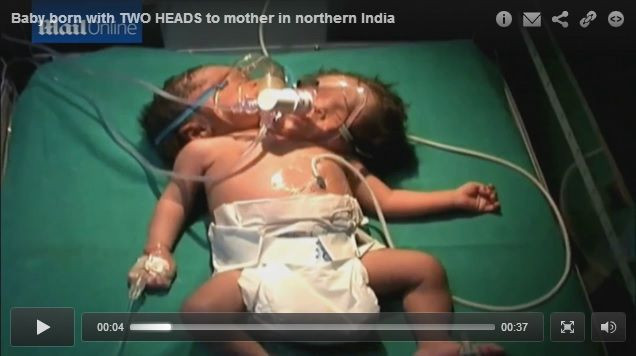Baby Born With Two Heads: Conjoined Twins Have Separate Spines But Share Same Body

Conjoined twins born this week in northern India, referred to as a “baby with two heads,” are struggling to survive after they were born with two heads, two necks, and two spines — but only one body.
The conjoined babies were born at Cygnus JK Hindu Hospital in Sonipat, Haryana, to a 28-year-old woman, Urmila Sharma, who was not able to afford an ultrasound during her pregnancy. Doctors are concerned about the twins’ survival, as the chance for conjoined twins to live is usually relatively low. “The parents are very distressed and we are helping the family the best we can,” Dr. Shikha Malik, the physician who delivered the baby, said. “We only came to know she was carrying conjoined twins after an ultrasound two weeks ago but it was too late to do anything by then.”
The condition, often referred to as “Siamese twins” in the past due to the famous Thai brothers born in Siam, is known as dicephalic parapagus — a rare phenomenon where the body parts of two separate babies are born attached together.
One of the most famous set of conjoined twins in modern times are the Hensel sisters. Abby and Brittany, who are currently 23 years old, share the same body but have two separate heads that can speak, think, and eat distinctly from one another. The sisters overall live a normal and happy life, have graduated from university, enjoy being with friends, and plan on being teachers. Perhaps most surprisingly, the girls have managed to learn how to drive with two heads and one body — one twin controls the arm on the left, the other controls the arm on the right.
However, in the case of the conjoined babies born in India, chances for their survival are uncertain. Malik continued, “Now the baby is born we will do our best to save her and we hope to operate once her condition is more stable.”
Dicephalic parapagus is more likely to occur among baby girls, and it’s rare for them to live. In some other cases, surgery is needed to remove an extra head from the body of a newborn, such as the case of a Dominican girl that occurred ten years ago.



























